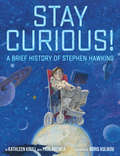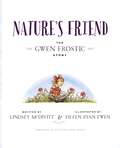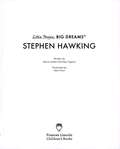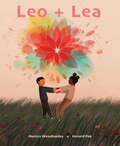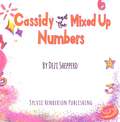Special Collections
STEMIE: Disability in STEM
Description: The STEMIE team has selected these titles that celebrate disabilities in STEM, featuring engaging illustrations and photos to provide young readers with valuable insights and experiences.
- Table View
- List View
How to Build a Hug
by Amy GuglielmoAmy Guglielmo, Jacqueline Tourville, and Giselle Potter come together to tell the inspiring story of autism advocate Dr. Temple Grandin and her brilliant invention: the hug machine.
As a young girl, Temple Grandin loved folding paper kites, making obstacle courses, and building lean-tos. But she really didn’t like hugs. Temple wanted to be held—but to her, hugs felt like being stuffed inside the scratchiest sock in the world; like a tidal wave of dentist drills, sandpaper, and awful cologne, coming at her all at once. Would she ever get to enjoy the comfort of a hug?
Then one day, Temple had an idea. If she couldn’t receive a hug, she would make one…she would build a hug machine!
The Girl Who Thought In Pictures The Story of Dr. Temple Grandin
by Julia Finley MoscaWhen young Temple was diagnosed with autism, no one expected her to talk, let alone become one of the most powerful voices in modern science. Yet, the determined visual thinker did just that. Her unique mind allowed her to connect with animals in a special way, helping her invent groundbreaking improvements for farms around the globe!
Stay Curious!
by Kathleen Krull and Paul BrewerA picture-book biography about science superstar Stephen Hawking, whose visionary mind revolutionized our concept of reality and whose struggle with ALS inspired millions. Perfect for parents and teachers looking to instill curiosity and a love for STEM.As a young boy, Stephen Hawking loved to read, stargaze, and figure out how things worked. He looked at the world and always asked, Why?He never lost that curiosity, which led him to make groundbreaking discoveries about the universe as a young man. Even being diagnosed with ALS didn't slow Stephen down. Those questions kept coming. As his body weakened, Stephen's mind expanded--allowing him to unlock secrets of the universe and become one of the most famous scientists of all time.Stephen always approached life with courage, a sense of humor, and endless curiosity. His story will encourage readers to look at the world around them with new eyes.
Six Dots
by Jen Bryant and Boris KulikovAn inspiring look at a child inventor whose drive and intelligence changed to world-for the blind and sighted alike - The story of young Louis Braille
Nature's Friend
by Lindsey McDivittGwen Frostic sought solace in art and nature. She learned to be persistent and independent - never taking no for an answer or letting her disabilities define her. An artist and business owner, Gwen dedicated her work and her life to reminding people of the wonder and beauty in nature.
Logan's Greenhouse
by JaNay Brown-WoodLogan searches for carrots in his wheelchair-accessible greenhouse in this vibrant exploration of gardening and healthy eating, from the Where in the Garden? picture book series.
Logan is organizing a pet playdate at his greenhouse for all of his friends, and his treats won’t be the same without his carrots. He’s searched and searched, but his greenhouse is filled with plenty of plants and Logan needs our help to identify them. What do we know about carrots? They’re long, orange, and have bushy leaves at the top—and, wait a moment, is that a carrot? No, that’s a turnip. Where, oh, where could those carrots be? Can you help Logan find them in time for his playdate? The third title in JaNay Brown-Wood and Samara Hardy’s Where in the Garden? picture book series stars Logan, a young boy who uses a wheelchair and accessible tools while gardening in his greenhouse.
Playful text guides young readers to hunt for visual clues and compare and contrast the unique characteristics of carrots against sweet potatoes, leeks, turnips, and other produce that grows in Logan’s greenhouse. Artist Samara Hardy brings this multi-layered story to life with vivid, cheerful illustrations created from layers of hand painted ink and watercolor texture. Back matter includes a delicious winter carrot soup recipe for little chefs and their adult helpers to try together.
Little People Big Dreams Stephen Hawking
by Maria Isabel Sánchez VegaraWhen Stephen Hawking was a little boy, he used to stare up at the stars and wonder about the universe. Although he was never top of the class, his curiosity took him to the best universities in England: Oxford and Cambridge. It also led him to make one of the biggest scientific discoveries of the 20th century: Hawking radiation. This inspiring story of the brilliant physicist's life features a facts and photos section at the back.
Leo + Lea
by Monica WesolowskaOne
boy
loves numbers.
Everywhere he looks
he sees things to count.
His classmates don’t understand counting as he does.
A new girl loves patterns.
Could she be
a friend
for
Leo?
This beautiful friendship story, inspired by the Fibonacci sequence and cleverly constructed using its mathematical pattern, celebrates our differences, as well as how math connects us to one another.
Young readers will love counting the number of words per page and discovering how they echo the Fibonacci Sequence, a mathematical series in which each number is the sum of the previous two: 0, 1, 1, 2, 3, 5, 8, 13, 21, and so on to infinity! Text and art are masterfully conceived and constructed to reflect Leo’s love of numbers. Even the color scheme in the striking illustrations follows a mathematical progression, bringing an underlying order and tranquility to the story. The mesmerizing symmetry of this fascinating and compulsively playable game of addition can also be found in the natural world and is an intriguing metaphor for the interconnectedness of all things.
Leah Marie and Her Down Right Perfect Path to Math
by Marylin Leinenbach and Anne RaymondThis is a story of a little girl, Leah Marie, who has Down syndrome. As she spends a week with her Gram, she shares with the reader fun ways that she and her Gram recognize and write numbers during the week. Leah Marie also takes the reader on an exciting journey as she shares mathematical shapes that she sees in her world. Leah Marie's message to all the readers is that math can be fun for everyone.
Just Ask!
by Sonia SotomayorFeeling different, especially as a kid, can be tough. But in the same way that different types of plants and flowers make a garden more beautiful and enjoyable, different types of people make our world more vibrant and wonderful. In Just Ask, United States Supreme Court Justice Sonia Sotomayor celebrates the different abilities kids (and people of all ages) have. Using her own experience as a child who was diagnosed with diabetes, Justice Sotomayor writes about children with all sorts of challenges--and looks at the special powers those kids have as well. As the kids work together to build a community garden, asking questions of each other along the way, this book encourages readers to do the same: When we come across someone who is different from us but we're not sure why, all we have to do is Just Ask.
Juan Has The Jitters
by Aneta Cruz and Miki YamamotoA story about inclusion, diversity, and the power of math to help one boy with autism thrive among his peers.
Juan claps his hands to get his Jitters out. They make his tummy swoosh and swirl. His Jitters happen when there are too many people, too much noise, or too many changes to his day. Juan doesn't like surprises.
Tomorrow there is an athletic event planned at school, which makes Juan very nervous. But his teacher has the perfect solution: math--Juan's favorite subject! Counting, sorting, and matching help Juan calm his Jitters. By making math part of the day's athletic games, and by appointing Juan the official judge, his teacher can make sure that Juan will have fun and feel included. The class is calling it the Mathletic Games!
Parents of children 4 to 8 years-old can use this book to help teach kids about neurodiversity, inclusion, and the beauty in what makes every one of us unique. Teachers will find the book meets several Common Core Standards for pre-K through third grade in reading and math, and nurtures multiple domains of scholastic development.
Dream Builder: The Story of Architect Philip Freelon
by Kelly Starling Lyons and Laura FeemanYou've seen the building. Now meet the man whose life went into it.
Philip Freelon's grandfather was an acclaimed painter of the Harlem Renaissance. His father was a successful businessman who attended the 1963 March on Washington. When Phil decided to attend architecture school, he created his own focus on African American and Islamic designers. He later chose not to build casinos or prisons, instead concentrating on schools, libraries, and museums--buildings that connect people with heritage and fill hearts with joy. And in 2009, Phil's team won a commission that let him use his personal history in service to the country's: the extraordinary Smithsonian National Museum of African American History and Culture.
Dream Builder: The Story of Architect Philip Freelon celebrates a contemporary black STEAM role model, a man whose quiet work enabled the creation of an iconic building reflecting America's past and future. With a stirring text by Kelly Starling Lyons, vibrant pictures by Laura Freeman, and an afterword from Philip Freelon himself, it is sure to inspire the next generation of dreamers and builders.
Cassidy and the Mixed Up Numbers
by Dezi ShepperdBeing a new student at school can be a big deal even when you are in kindergarten. It’s Cassidy’s first day at a new school and she is a little nervous. Will she be able to keep up with her classmates or will her learning disability get in her way? Follow her first few days as she finds her confidence and voice in kindergarten.
Bodies Are Cool
by Tyler FederThis cheerful love-your-body picture book for preschoolers is an exuberant read-aloud with bright and friendly illustrations to pore over. From the acclaimed creator of Dancing at the Pity Party and Roaring Softly, this picture book is a pure celebration of all the different human bodies that exist in the world. Highlighting the various skin tones, body shapes, and hair types is just the beginning in this truly inclusive book. With its joyful illustrations and encouraging refrain, it will instill body acceptance and confidence in the youngest of readers.
“My body, your body, every different kind of body! All of them are good bodies! BODIES ARE COOL!"
Ben's Adventures
by Elizabeth GerlachBenjamin can't walk and he can't talk, but he can use his imagination to have amazing adventures! Today he is at the beach flying with a kite, counting crabs and building a sandcastle. Benjamin shows us that despite physical or medical differences, all kids can play and dream!


